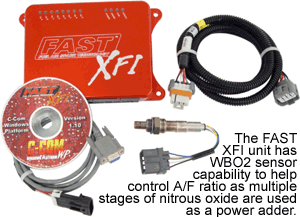
Street cars and street high performance cars have long had electronic fuel injection (EFI) to get better economy or performance and maintain emission control. But drag racing cars – except for the import racing ranks, which have grown in the past five years – have been slow to adopt EFI as a fuel delivery and management device. Well, it seems slow to me. I first started working with EFI for racing applications back in the early ‘90s when MSD Ignition started its fuel management section, and I wrote up some of its first injector tech info, and researched and order fuel injectors and other EFI parts.
Mechanical fuel injection (see: Hilborn) was king in most racing that allowed fuel injection (still is, some would say), but EFI was making some inroads – the racing Buick Grand National V6 ranks and Mustang 5.0 cars really spurred on street performance EFI and stand-alone aftermarket EFI performance units that could be programmed by a racer. It seemed only a matter of time before some racing classes would adopt this new wave of electronic fuel management.
 A matter of time, indeed. It’s 15 years later, and despite major investment from some of the biggest players in the performance and racing aftermarket (Edelbrock, ACCEL, Comp Cams’ F.A.S.T brand) the number of classes in drag racing using EFI is still rather small. According to Jay Rohrback of FAST, he’s found that it isn’t that easy to sell EFI systems to individual drag racers, but that they are selling to drag racing engine builders.
A matter of time, indeed. It’s 15 years later, and despite major investment from some of the biggest players in the performance and racing aftermarket (Edelbrock, ACCEL, Comp Cams’ F.A.S.T brand) the number of classes in drag racing using EFI is still rather small. According to Jay Rohrback of FAST, he’s found that it isn’t that easy to sell EFI systems to individual drag racers, but that they are selling to drag racing engine builders.
It seems that even in bracket classes most racers are not building their engines like they used to. They are now buying “crate motors” from major drag engine builders, and you can look too at how the factory’s crate engine programs are getting more robust to see why this trend is moving forward.
These crate motor programs may include an engine management package that has already been sorted out.The primary drag racing ranks of IHRA that seem to be embracing EFI are the Top Sportsman and Top Dragster classes according to Jay. On the NHRA side he sees it going to 8.90—9.90 sec. racers. The prime buyer is someone who races in a class using “lots of power adders” (nitrous stages, turbos) according to him, and can benefit most from the exact fuel (and ignition control in most cases) available from EFI.